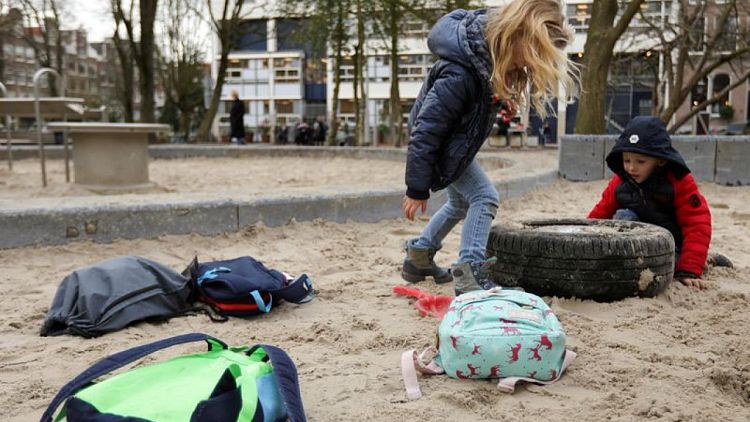AMSTERDAM - Virologists in the Netherlands have proposed extending holidays over Christmas to slow a surge in COVID-19 cases among children that has forced half of schools nationwide to send classes home, but the government said it wanted to keep them open.
The National Institute for Health (RIVM) reported a record number of over 110,000 cases in the week to Nov. 16, an increase of 44% from the previous seven days. The strongest rise was among children aged 4-12.
Infections among children of primary school age, aged five to nine, jumped almost 85%, and among children aged 10-14 by 76%.
"Keeping primary schools closed for longer is an effective way to keep the virus under control," immunologist Ger Rijkers told the Algemeen Dagblad newspaper. "Children are virus factories and infect adults as well as each other."
However, Education Minister Arie Slob took a different stance, noting that most teachers had been vaccinated and most children only experienced mild symptoms of COVID-19.
"The cabinet has agreed to shield education as much as possible (from restrictions). I am convinced it is responsible to keep schools open," he said on Twitter.
The European Union's drug regulator is likely to disclose its view on the use of Pfizer and BioNTech's COVID-19 vaccine in children aged 5 to 11 next week, Austria's health ministry said on Wednesday.
Around 85% of Dutch adults have been fully vaccinated, but infections have hit record levels in recent weeks after the government ended social distancing and other measures in September.
Authorities have reintroduced mask-wearing and reimposed a partial lockdown, with bars and restaurants closing at 8 p.m.
All 12 Dutch provinces will be dark red - the highest alert level - for the first time on a weekly chart published by the European Centre for Disease Prevention and Control on Thursday.












